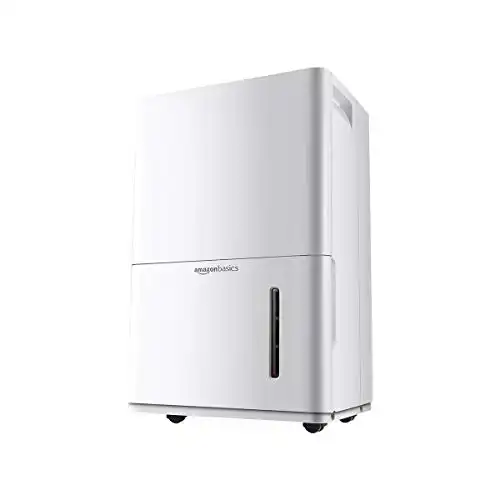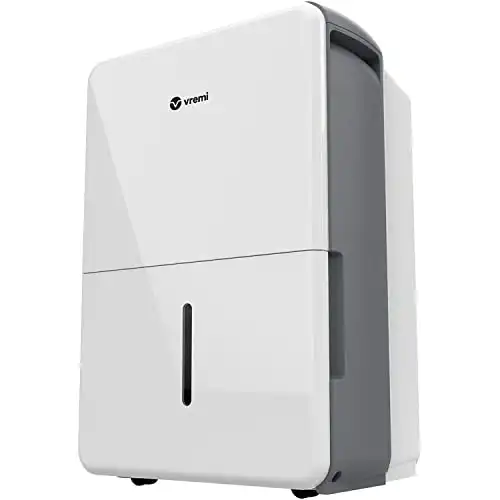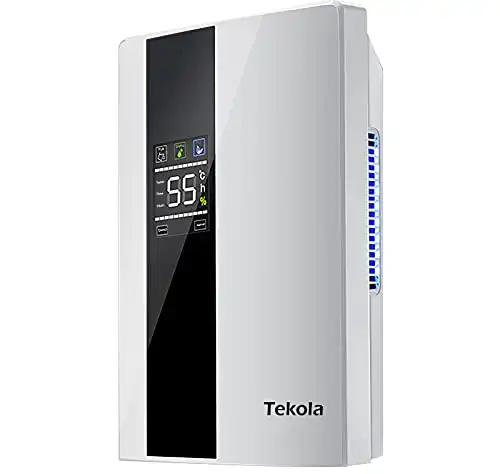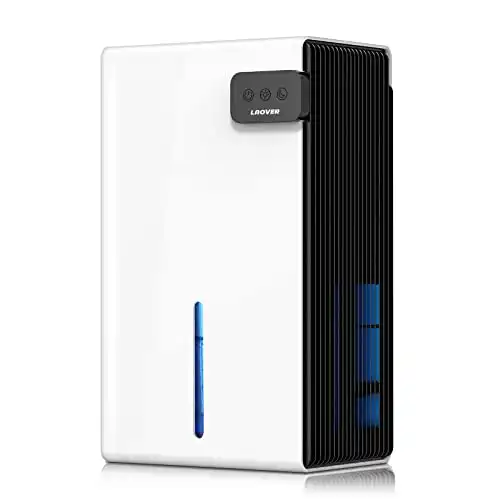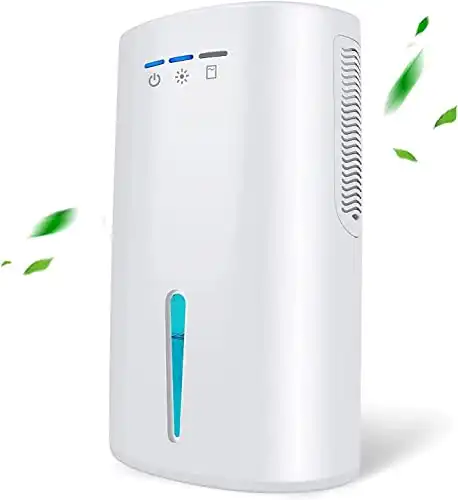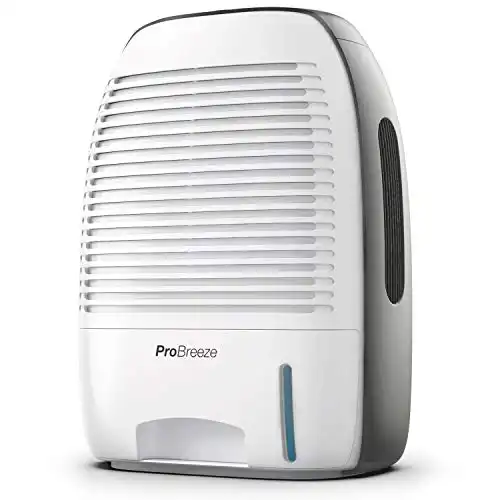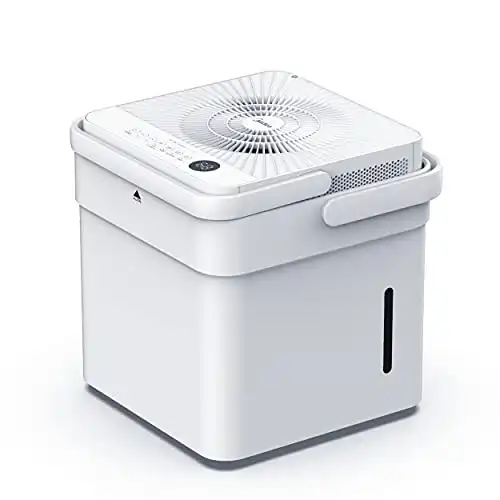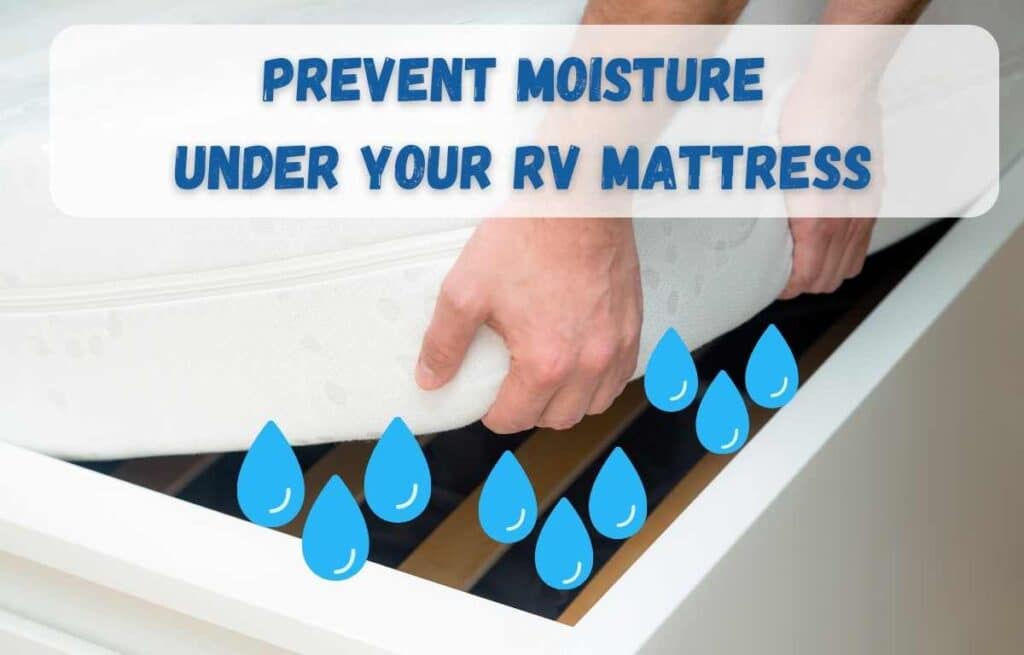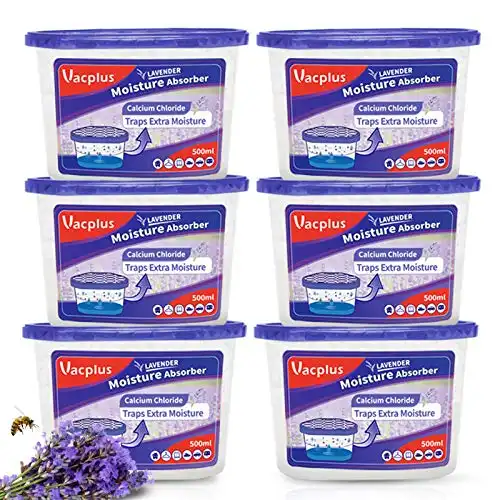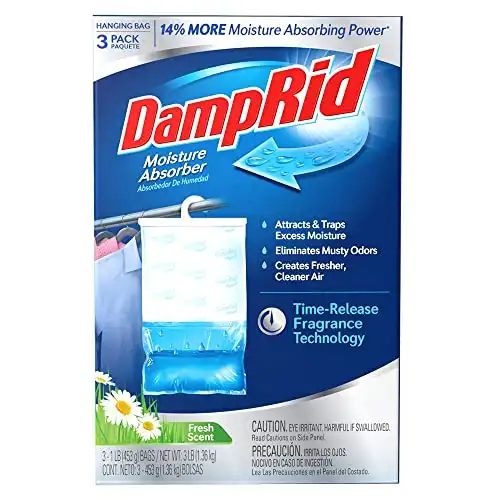One frustrating part of RV living is dealing with humidity and moisture, especially when it begins to collect inside your RV on the walls, under the mattress, or on clothes and linens stored in the closets. Reducing moisture buildup in your RV is important not only for protecting your RV but also for your health since moisture can lead to mold growth, which has a variety of negative health impacts. RV dehumidifiers are a great appliance to have when moisture becomes a problem.
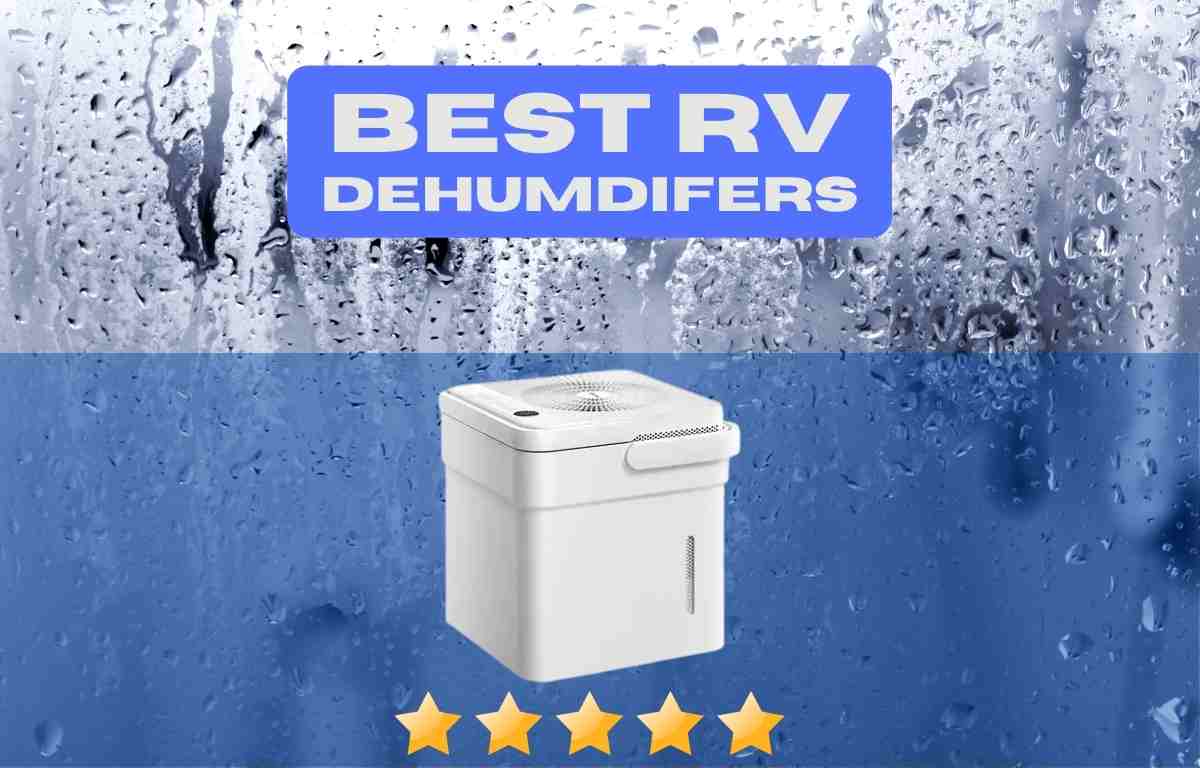
While moisture in your RV can be a problem in the summer, air conditioners usually help control and keep it low. However, if your RV is sitting unused in a humid area, it can be a problem.
However, the winter can be more challenging. Many people who use their RVs in winter months, especially for extended periods, are often confronted with moisture problems. This issue is due to several factors. The most common cause is that your RV doesn’t breathe as much in the winter because it’s usually sealed up to keep heat inside.
When you spend time in the RV, most of the moisture is produced by the occupants as they breathe out warm air. Since there’s nowhere for it to go, the humidity level in the RV rises. As a result, it’s common to see water form on the windows or walls, which are colder than the surrounding air. This condensation causes the humid air to turn into liquid, which can then attach to the cold surfaces.
After spending over three winters living in an RV, I know just how important it is to manage humidity. While it can often seem like an uphill battle, trust me in saying that it can be controlled with the right tools and a little bit of planning. I mastered the techniques in my RV, and the dehumidifiers I list below are great options, so you can do the same.
| Product Image | Product Name | Price / Primary Button |
|---|---|---|
|
||
|
||
|
||
|
||
|
||
|
||
|
What causes moisture in an RV?
Several factors can contribute to moisture buildup in an RV:
- Humidity: High humidity levels in the air can cause moisture to condense on surfaces and accumulate inside the RV. Humidity is often a factor in weather and climate. On wet rainy days, humidity levels will be higher outside, creating more opportunity for higher humidity inside your RV.
- Leaks: If the RV has any leaks or openings in the roof, walls, or windows, moisture from the outside can enter the RV and cause moisture buildup. As damp or moist items sit inside your RV, they can transfer to the air and create a damp feeling throughout your living space.
- Cooking and showering: The moisture produced by cooking, showering, and other activities can contribute to humidity levels inside the RV. Propane, when burned, will naturally release moisture. While your RV furnace vents outside, water vapor from cooking remains in the living space.
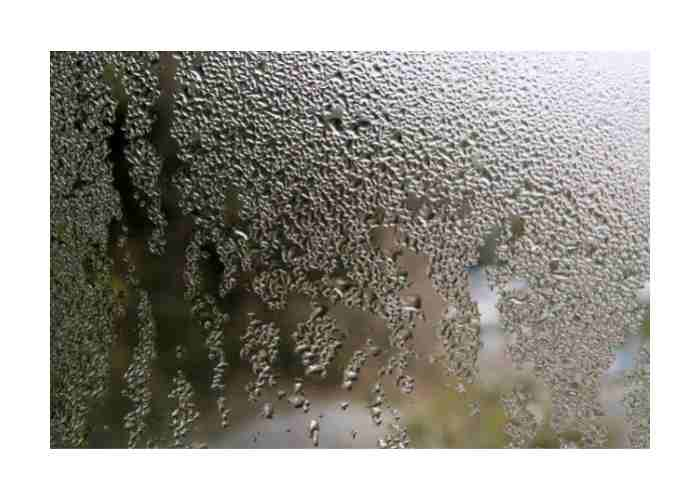
Also, moisture will be added to the air when showering, doing dishes, or using water. This is especially true when taking a hot shower. The easy way to identify this is to look at the mirror and walls after using the shower. They’re usually wet or steamy.
- Poor ventilation: If the RV has poor ventilation, moisture can become trapped inside and contribute to humidity levels. In the winter, many people keep vents and windows closed. This traps moisture inside. It’s a good idea to open up a roof vent and turn on the fan when showing, even in the winter.
- Cold temperatures: When the temperature outside is cold, moisture from the air can condense on cold surfaces inside the RV, such as windows and walls. If you see water droplets on your windows in the winter, this is the reason why. When the humidity level inside is higher, this causes the moisture to condensate and create these issues.
How can you reduce moisture buildup in an RV
To prevent moisture buildup in an RV, it’s important to control humidity levels, fix any leaks or openings, use proper ventilation, and address any other sources of moisture.
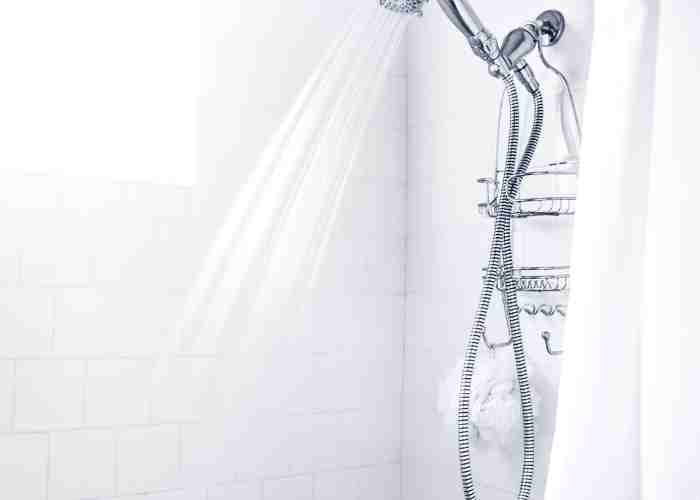
Here are some ways to reduce moisture buildup in an RV:
- Control humidity levels: Use a dehumidifier to remove excess moisture from the air, and try to keep the humidity level inside the RV below 50%.. Personally, I set my dehumidifier to the lowest setting, which seems to have the greatest impact on keeping humidity levels low. I also occasionally move the dehumidifier to different parts of the RV.
- Fix any leaks or openings: Check the roof, walls, and windows for any leaks or openings that may allow moisture from the outside to enter the RV. On humid days, even a small opening in a window can cause the humidity level to spike.
- Use proper ventilation: Ensure the RV has adequate ventilation to allow moisture to escape. This may include opening windows and vents and using exhaust fans. When showing, it’s a good idea to open up the roof vent in your bathroom.
- Address sources of moisture: Try to minimize the amount of moisture produced inside the RV by cooking and showering in small amounts, using the exhaust fan when cooking, and wiping down surfaces after cooking and showering.
- Insulate the RV: Proper insulation can help to prevent moisture from condensing on cold surfaces inside the RV, such as windows and walls. Plastic insulation over the windows can make a big difference, especially when combined with a dehumidifier.
Can humidity and moisture damage your RV?
Yes, high humidity can cause damage to an RV. When the air inside an RV is humid, it can lead to the growth of mold and mildew, which can damage the interior of the RV and create health problems for the people living inside. High humidity can also cause wood and metal components to rust, making the RV feel stuffy and uncomfortable. It’s important to try to keep the humidity levels in an RV comfortable, typically between 30% and 50%, to prevent damage and maintain a pleasant living environment.
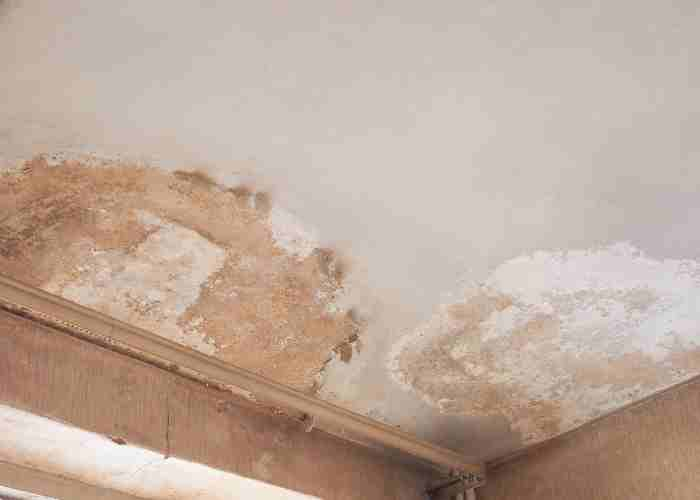
Health Hazards of Mold
If moisture is left unchecked, it can cause mold to grow. Often, you won’t even notice it until it’s too late. For this reason, prevention is key.
Mold is a type of fungus that can grow indoors and outdoors. It can grow on various surfaces, including walls, ceilings, and furniture, and is often caused by high humidity levels or water damage. Mold can harm people’s health, especially those who are allergic to mold or have weakened immune systems.
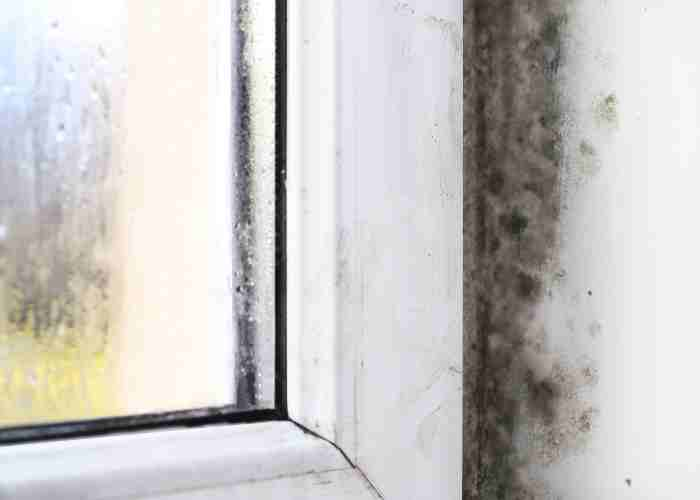
In RVs, mold will often grow in places that aren’t always visible, like inside closets, under the carpet, or under your RV mattress. Exposure to mold can cause a range of health problems, including:
- Allergic reactions: Mold can cause allergy symptoms such as sneezing, coughing, runny nose, and red, itchy eyes.
- Asthma attacks: Mold can trigger asthma attacks in people with asthma, causing difficulty breathing and chest tightness.
- Respiratory issues: Mold can irritate the respiratory system and cause symptoms such as shortness of breath, wheezing, and coughing.
- Skin irritation: Mold can cause skin irritation and rashes in some people.
- Nasal stuffiness: Mold can cause nasal stuffiness and congestion.
- Eye irritation: Mold can cause redness, itching, and watering of the eyes.
If you suspect mold is growing in your RV, it’s important to address the problem as soon as possible to prevent further health problems and damage to the RV. You can reduce the risk of mold by controlling the humidity levels in your RV, fixing any leaks or water damage, and regularly cleaning and maintaining the space. If you cannot remove the mold yourself, hiring a professional to do the job may be necessary.
Dehumidifiers: The Best Way to Control Humidity in Your RV
A dehumidifier is one of the best ways to reduce moisture in your RV. A dehumidifier will significantly reduce the humidity level in your RV and prevent other problems from developing. However, make sure you purchase a large enough dehumidifier that exceeds your RV’s stated square footage.
How does a dehumidifier work?
A dehumidifier is a device that removes excess moisture from the air, helping to reduce the humidity level in a room or an enclosed space. It works by drawing in moist air and passing it over a cooled coil, which causes the moisture in the air to condense into water droplets. The dehumidifier collects the water in a container or drains it away through a hose.
Here is a simplified explanation of how a dehumidifier works:
- A fan in the dehumidifier draws in moist air from the surrounding area and blows it over a cooled coil.
- As the air passes over the cooled coil, the moisture in the air condenses into water droplets and collects on the coil.
- The dehumidifier has a built-in heater that warms the cooled air and blows the less-moist air back into the living space.
- The collected water is drained through a hose or collected in a container within the dehumidifier. In an RV, the best option is to use the container rather than drain it into a sink or shower (which saves space).
- The dehumidifier will continue to run until the desired humidity level is reached, at which point it will shut off until the humidity level rises again. In my RV, I usually set the humidity level to the lowest setting.
Dehumidifiers are an important tool for reducing humidity levels in your RV. High humidity can lead to mold growth and mildew, as well as cause discomfort for people and pets or cause damage to the RV. Dehumidifiers can also help to protect clothing and other household items from damage caused by excess moisture.
What Size Dehumidifier is right for my RV?
The size of the dehumidifier you need for your RV will depend on the size of your RV and the humidity levels in your area. As a general rule, you should aim to have a dehumidifier that can remove at least as much moisture from the air as the amount of moisture that your RV will produce.
However, I strongly suggest purchasing a dehumidifier that is designed for a large rooms. I have used smaller ones in the past, and they simply do not compare to the benefits of a larger one. You don’t need to use an excessively big one, but for a 250 square foot space, I would suggest using a dehumidifier designed for a 750 or even 1000 square foot space.
Larger dehumidifiers will also have a greater capacity for storing water. This will reduce the amount of time you need to empty your water collection bin. It’s also important to consider the size and weight of the dehumidifier when selecting one for your RV. You’ll want to choose a model that is small and lightweight enough to easily transport and store in your RV, yet robust enough to do the job. The dehumidifiers recommended in this article fit this bill.
The Best RV Dehumidifiers:
The best dehumidifier is the one that will work for your RV. You can likely choose a smaller unit if you have a small travel trailer. However, larger RVs may opt for a larger model. Since RVs are smaller than homes, you rarely need an extra large residential unit. However, it’s helpful to upgrade a size if camping in a humid climate or living in your RV over the winter.
RV owners value space, so choosing a portable dehumidifier is important. A compact dehumidifier will save valuable living space, but it will also store more easily. The good news is that any good dehumidifier will positively impact the humidity level in your RV.
The below buying guide includes my top picks for choosing the best type of dehumidifier for your specific needs.
The Amazon Basics Dehumidifier is the largest of the options. It is rated for up to 2,500 square feet of space, much larger than you need in an RV. However, if you have significant moisture problems, camp in humid conditions, and need an affordable solution, this will work well. While it’s not the most feature-rich dehumidifier on the list, it does what it’s designed to do and does it well. It has an auto-restart feature that will maintain your settings during a power outage. This is helpful for RVing when you frequently disconnect from power when traveling. While designed for larger spaces, its a great dehumidifier that will maintain a comfortable environment in your recreational vehicle.
- 2500 square feet
- Auto re-start feature
- Smart dehumidification feature to maintain humidity levels
- drain hose outlet
- Includes timer feature, auto-defrost function, and overflow protection
- Easy to clean reusable filter
The Vremi dehumidifier removes up to 22 pints from the air daily, which is more than enough for any RV, even in high-humidity areas. It’s rated for 1,500 square feet. The dehumidifier is Energy Star compliant, with user-friendly features to keep it functioning as needed. It has a quiet fan, which is helpful for a small space like an RV. This larger-sized unit will be powerful enough for any RV situation. This is a good solution if camping in the winter, when humidity levels are worst.
- 1500 square feet
- Quiet Fan Speed
- Energy Start Complaint
- Turbo Mode when you need the extra boost
- 3-liter water tank capacity
- Automatic shutoff
This small form and quiet dehumidifier is a great size for an RV. While smaller than some of the bigger units available, it is a great balance of size and effectiveness. It can quickly and effectively remove up to 1100ml of moisture from the air per day in a humid environment of 86°F and 80% relative humidity space, keeping moisture below 45%. The unit is easy to use and boasts an intelligent control panel, allowing you to check humidity levels and set it to the desired level. You can also set it to a high and quiet mode, allowing you to turn it down at night when sleeping.
- 550 square feet
- Auto Shut off
- The large capacity water tank (2100ml)
- Intelligent Control Panel
- LCD display
- Remote Control
- 2 Dehumidification Modes
This unique design is perfect for RVs, especially if you want a unit you can pull out when needed and store when you don’t. The unit has a bucket design, which collapses when not in use. Because of this, it has a very large 12-liter bucket for collecting the water, meaning you won’t have to empty it often. Another great thing about this unit is the ability to skip the bucket altogether. You can simply place the unit in the sink or show it and let it drain there. It’s designed for 1,500 square feet, which is more than enough for any RV. The best thing is that it’s also a smart appliance, allowing you to control it directly from Amazon’s Alexa or through the app. It has excellent reviews. While on the larger size and a little more expensive than other options, it’s a reflect RV dehumidifier when you need some serious moisture control.
- 1500 square feet
- Automatic Shut-off feature
- 24-hour timer
- built-in handle
- Smart app control (set your desired humidity level)
- Huge capacity water tank (over 3 gallon water tank capacity)
- It can be placed directly in the sink
- Auto Defrost
- Great for a larger area
- Compact when not in use
This Pro Breeze dehumidifier is one of the bestselling RV dehumidifiers, largely because it’s so small. It’s the smallest on the list, designed for just 250 square feet. If you have moderate moisture and humidity concerns, this ultra-portable unit may be just what you’re looking for. This small dehumidifier model removes up to 18oz of excess water daily. It has a large 52oz water tank that’s easy to see through the viewing portal. It’s also extremely quiet and energy efficient. Because of its low power consumption, it's a good option if you rely on solar-powered batteries. Ideal for small spaces, it’s a great choice if you want a dehumidifier that you can run all year long.
- 250 square feet
- Perfect for small areas
- automatic shutoff feature
- Low energy consumption
- good capacity: 52 ounces of water
- Ultra-portable
The Laover dehumidifier is the perfect size for any RV, large enough to tackle all of your moisture problems yet compact enough to fit in small RV spaces. The unit is designed for 720 square feet and has 2-speed modes, reducing noise when sleeping or watching TV. This dehumidifier also offers relaxing, colorful lights, which some may or may not appreciate. The dehumidifier is preset, meaning you don’t need to select the desired humidity level. This is a good option for an RV if you want to plug and lay option. This unit has a stylish, clean look that won't be an eyesore in your RV.
- 720 square feet
- Auto Shut off
- The large capacity water tank (2800ml)
- Colorful lights (makes a nice night light)
- 2 Dehumidification Modes
- Quiet Operation
Moisture Absorbers
In addition to using a dehumidifier, I highly recommend purchasing some inexpensive moisture absorbers, such as the popular Damprid brand. These are also referred to as desiccant dehumidifiers. These are helpful to place in small spaces like closets or cabinets. They will help reduce moisture in areas closed off to the air circulated by the electric dehumidifier. Even in large RVs, these small products can have a big impact. Best of all, they don’t require any energy usage or power sources.
How do moisture absorbers work?
DampRid moisture absorbers are designed to help reduce excess humidity and moisture in the air. They work by using a special material called a desiccant, which is a substance that absorbs moisture from the air. The desiccant used in DampRid products is a type of calcium chloride, which is highly effective at absorbing moisture.
To use a DampRid moisture absorber, you simply need to open the container and place it in an area where excess moisture is a problem. As the air in the room passes over the desiccant material, it will absorb the moisture and hold it until it becomes saturated. At that point, the excess moisture will be released into the air, where it can then be eliminated through ventilation or air conditioning.
Moisture absorbers are convenient and easy to use, and they can help to prevent problems such as mold and mildew growth, musty odors, and damage to clothing and other items caused by excess humidity. They are particularly useful in areas of the RV that are prone to excess moisture, such as closets, cabinets, or storage areas.

